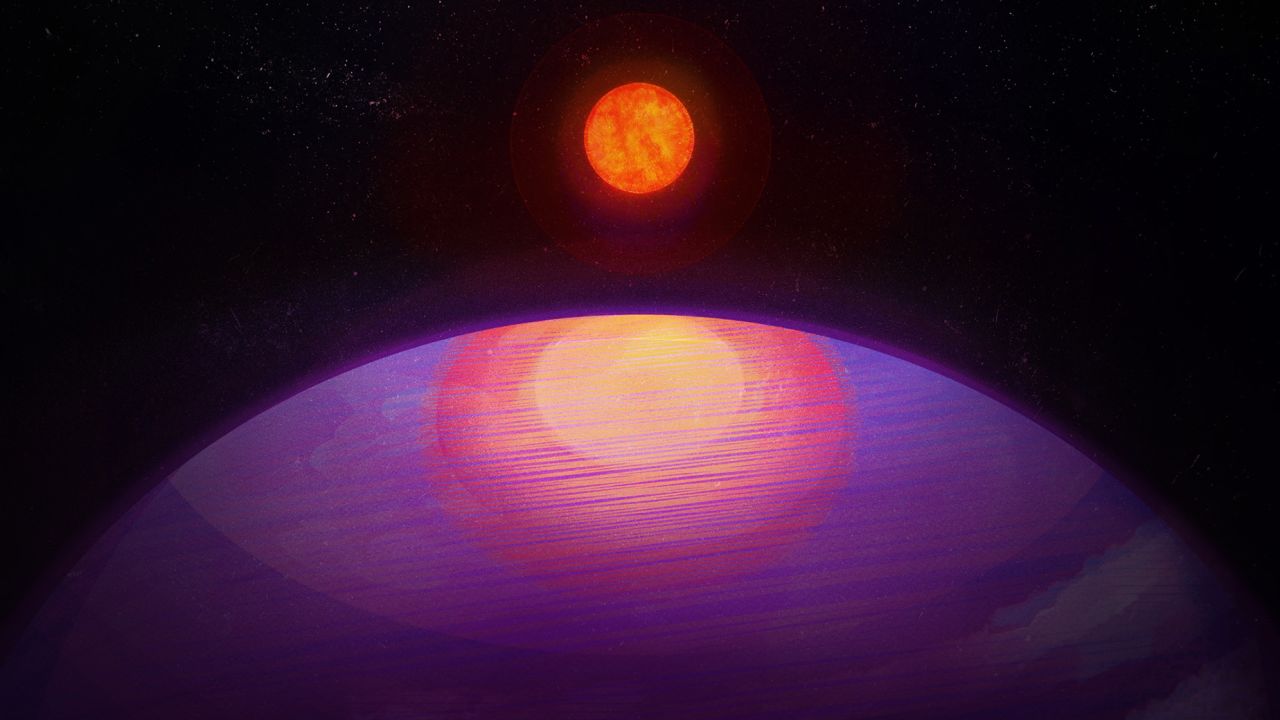(CNN) — Astronomers are questioning theories of planet formation after discovering an exoplanet that technically shouldn’t exist.
A planet with the mass of Neptune and 13 times the mass of Earth has been discovered orbiting an ultracool M dwarf star called LHS 3154, which is nine times less massive than our Sun.
According to a new study published Thursday in the journal Science, named LHS 3154b, orbits the star and completes one orbit every 3.7 Earth days, making it the most massive planet orbiting one of the world’s coolest and least-mass stars. This is a radical change in the way scientists understand the formation of planetary systems.
“This discovery highlights how little we know about the universe,” said study co-author Suvrat Mahadevan, the Verne M. Professor of Astronomy and Astrophysics at Penn State. Villaman said. “We wouldn’t expect such a massive planet around such a low-mass star.”
Stars form from large clouds of gas and dust, and the remaining material forms a disk around the star, where planets are born. The amount of material in the disks around stars determines the mass of the planets that form around them. The material of the disc largely depends on the mass of the star.
For example, small M dwarf stars are more common throughout the Milky Way, and are often orbited by smaller, rocky planets rather than gas giant planets.
“The planet-forming disk around the low-mass star LHS 3154 may not have enough solid mass to form a planet,” explains Mahadevan. “But it’s out there, so now we have to rethink our understanding of how planets and stars form.”
This map compares the size of our Sun and Earth to the smaller, cooler star LHS 3154 and its orbiting planet LHS 3154b (Credit: Penn State)
Living area
The planet orbits a star located about 51 light-years from the Sun and was discovered by the Habitable Zone Planet Finder, or HPF, installed on the Hobby-Eberly Telescope at McDonald Observatory in Texas.
A team of scientists led by Mahadevan developed the HPF, which is designed to detect planets orbiting within the habitable zone of small, cool stars. The habitable zone is the perfect distance from a star to a planet hot enough to support liquid water on its surface and, potentially, life.
Because smaller stars have lower surface temperatures, planets can orbit them more closely and maintain weak elements such as water on their surfaces. As the planets orbit their stars, the gravitational force between the two bodies creates a noticeable wobble that the HPF can detect in infrared light.
“Think of the star as a fire of fire. The colder the fire, the closer you need to be to get warm,” explains Mahadevan. “The same goes for planets. If the star is cold, if a planet wants to be hot enough to have liquid water, it has to be close to the star. If a planet orbits close to its ultracool star, we can see a very subtle change in the color of the spectrum or when the star’s light is pulled by the orbiting planet. Find it.”
A planetary puzzle
Based on modeling and analysis, the research team believes the planet has a heavy core, which should have more solid material in the planet-forming disk than existed around the star, says study co-author Megan Delamar. degree in astronomy from Penn State.
The researchers estimate that the amount of dust in the disk should be at least 10 times greater than that typically found in disks around low-mass stars.
“Our current theories of planet formation have trouble explaining what we see,” Delamar says in a statement. “Based on current research work with HPF and other instruments, an object like the one we found is extremely rare, so it’s very exciting to find it.”
Some massive planets have been found orbiting low-mass stars, such as GJ 3512 b, discovered in 2019, but their orbital periods are very long, and the planets do not orbit their stars closely.
“Our discovery provides a serious test case for all existing planet formation theories,” Mahadevan said. “That’s what created the HPF, to find out how the most common stars in our galaxy form planets, and to find those planets.”





